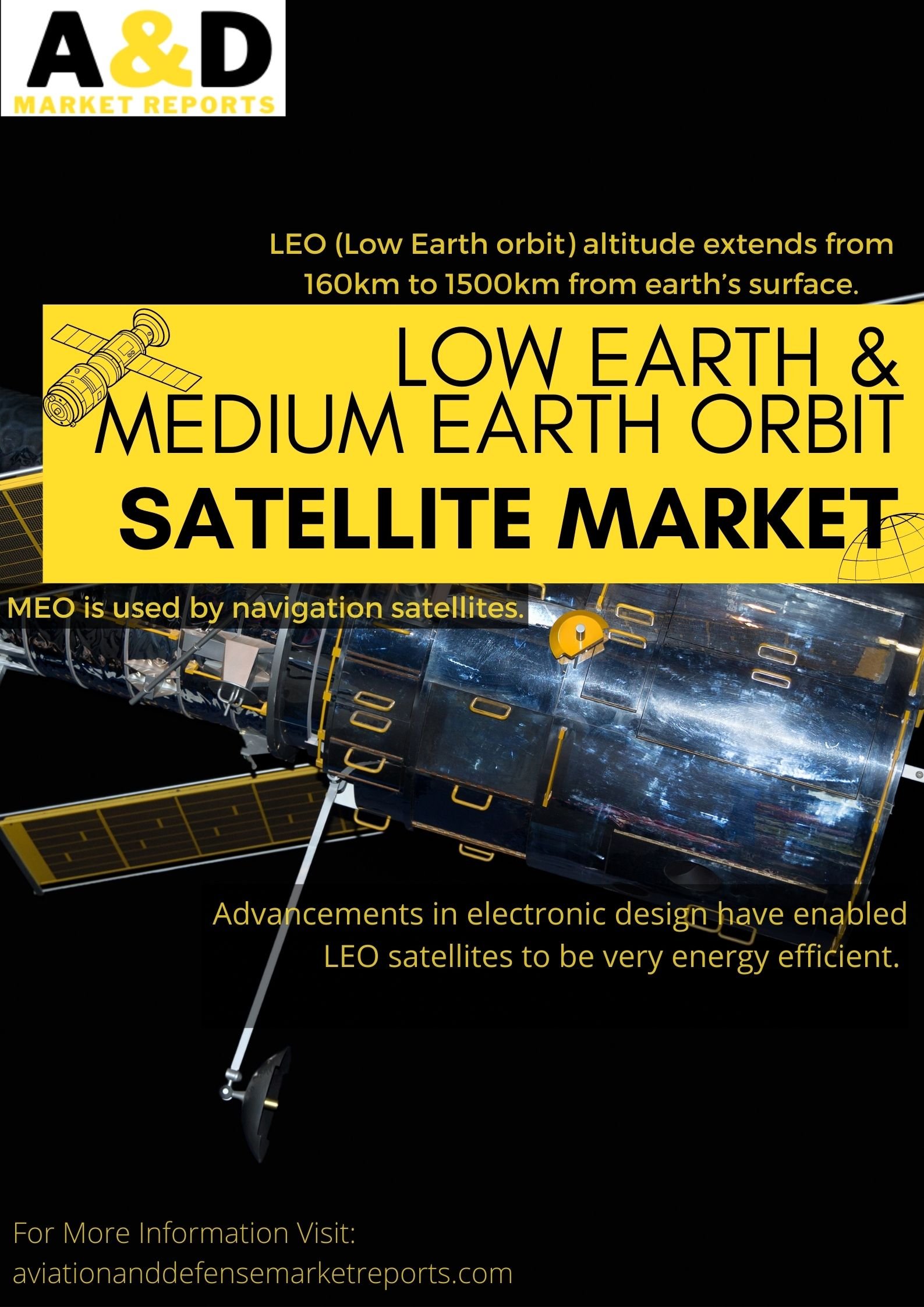LEO (Low Earth orbit) altitude extends from 160km to 1500km from earth’s surface. LEO is <2000km from the earth’s surface. The velocity is very high and satellites in LEO can circle earth 12-15 times in 24 hours. Satellites in LEO travel at speeds in excess of 20,000km/hr. For communication satellites in LEO frequent hand off of subscribers between satellites is required every few minutes. An excellent ground station network is also required since the satellites are travelling at a very high speed and will be in range of ground stations only for a few minutes. One of the key characteristics of LEO is that a constellation of satellites must be in place to generate revenue which is a stark contrast to the fact that revenue can be generated with just one satellite in GEO. One of the key advantages of LEO satellites is that communication can be has with very less latency when compared to satellites of other orbits. This make LEO an ideal choice of 5G/6G and tactical communication application. LEO satellites are also small and less expensive that satellites of other orbits, hence numerous satellites can be delivered in a single launch. Companies such as Amazon, OneWeb and SpaceX’s Starlink are planning to place more than 18,000 satellites in LEO for their respective broadband services. Advancements in electronic design have enabled LEO satellites to be very energy efficient. Embedded systems and SoC (System on a chip) along which increasing power of microprocessor has also added to the capability of smaller satellites.
The U.S. Army is developing a resilient SATCOM network by having a small constellation of LEO and MEO satellites. The strategy will enable to U.S. Army to have low latency communication capability along with higher bandwidth. It will also be a critical component of command and control capability. MEO (Medium Earth Orbit) is between the LEO and GEO i.e. between 2000km to 35000km. MEO is used by navigation satellites. The MEO is Van Allen belt and is exposed to significant amount of radiation. MEO satellites have radiation hardened electronics, the electronic chips used in MEO satellites are usually greater than 20nm in size, and the bigger chip helps to counter the effects of radiation.
The electronics are also encased in multiple layers of protection consisting of different metals. Most of the navigation satellites are at a distance of 20,000km and this particular region of MEO if heavily used. With respect to the economical aspect, MEO requires far lesser satellites when compared to LEO and is also cheaper than GEO. MEO also has lower latency and GEO. MEO satellites also have a lot of room to manoeuvre, the satellite altitude can be increased or decreased depending on the mission requirement. MEO satellites provide high bandwidth data connectivity to government and private enterprises. MEO satellites provide near fibre like connectivity performance to remote areas where fibre laying is not possible. Cruise ships, maritime vessels, aircrafts and offshore platforms. Around 10 -15 MEO satellites are needed for global coverage and satellite life is 10-15 years.
Current deployment in MEO includes, NAVSTAR – There are 24-28 operational satellites in orbit. NAVSTAR position system user require more or more satellites to get accurate location information. O3b constellation deployed at 8000km provides low latency broadband connectivity to remote areas. Apart from communication and navigation application, MEO satellites are also involved in agricultural applications for agricultural filed observation and monitor growing conditions, Forest observation application for detecting forest fires and estimation of biomass, Ocean observation application for forecasting fishery resources and monitoring of ocean winds and air pollution and weather observations.
In ISR (Intelligence, surveillance and Reconnaissance) missions MEO satellites provide crucial communication connectivity for transfer of high resolution images to and from the highly contested remote battlefield locations. Current navigation constellations in MEO includes, GPS (Global Positioning System), GLONASS Russian navigation system, Galileo navigation system and BeiDou Chinese navigation system. In the years to come MEO will be dominated by satellites providing broadband connectivity as satellite broadband penetration increases. These satellites will complement and extend the existing terrestrial network and also increase the network resilience by stepping in when few LEO satellites fail.
The O3b mPOWER constellation which will consist of 11 high performance satellites will provide connectivity to software, government enterprises and also provide connectivity solutions for mining. These next generation satellites will be at the forefront of upcoming MEO constellations. O3b mPOWER will also be also be providing connectivity solutions to U.S army in multi domain operations. The strategy of leveraging commercial MEO constellations will be complementing the US government’s multi domain operation goal by 2028.
